Grapes need very special conditions to produce quality fruit and good wine. Argentina is the only country in the world where all the good stuff comes together at higher than 5,000 feet. The town of Cafayate, at about 1,600 meters (just about a mile high), has everything that grapes love and very little of what they don’t. The area has a mind-bottling 340 days of sunshine, long warm days, and cool nights, with an average of 40 degrees difference between day and night. Average yearly rainfall is 7 inches. Just sit for a minute and think about all of those things in one place. There is no hail to threaten the crops compared to Mendoza where they had to cover the grapes with nets to protect from hail. The climate is dry and the town is at altitude, so there are no bugs or wet conditions that lead to diseases. And, the soil sucks. Yes, sucks, which is actually good for grapes. You couldn’t get a shovel in the rocky stuff, and Ande was actually shocked at the soil profile in the wine museum.
The area boasts more than 25 bodegas producing wine, all of them within a few kilometers of Cafayate. It is also home to the unique Torrontes grape, which is a native white grape grown only in that region. The Torrontes wine is fruity, crisp, and a little acidic. It was very good and very unique. One luxury that the growing conditions also provide is the ability to leave the grapes on the vine as long as they wish, which also produces the Torrontes Tardes (late wine). If they leave the Torrontes grapes on the vine longer, they become very sweet. The early harvest wines are crisp, and the late harvest wines are sweet dessert wines–both from the same grapes. In most other grape growing region in the world they don’t have the luxury to leave grapes on the vine for fear of loss to weather, bugs, or disease.
The town of Cafayate is your typical Latin-American town with a central city square with a church, multiple restaurants and shops, and the rest of the settlement radiating out from there. What makes it unique is that many of the bodegas are also in town within walking distance. We only really had one full day in Cafayate, so we made the best of it. In the morning, we walked from our hotel to the excellent wine museum. The curation uses poetry about the elements, weather, soil, and unique growing conditions to tell the story of the wine. There’s even a scale model of the valley where the sun rises and sets every 15 minutes. It was certainly unique from any museum we’ve ever visited and not something that can be shared with pictures. After a winding journey through the life of the grape, you walk through decommissioned wine vats to another part of the building where you experience the history of wine making in the region. They used scale model dioramas and video together to bring the displays to life. We tried to take pictures, but it just doesn’t translate. Of course, the museum also has a hall of what seems to be one of every bottle of wine ever produced in the region along with a tasting room where you can experience many of them.
Upon exit of the museum, you are also treated to the unique visage of the neighbor’s house across the street. We have no idea the story because we couldn’t communicate well enough to ask and can only guess it was the abode of a local artist.
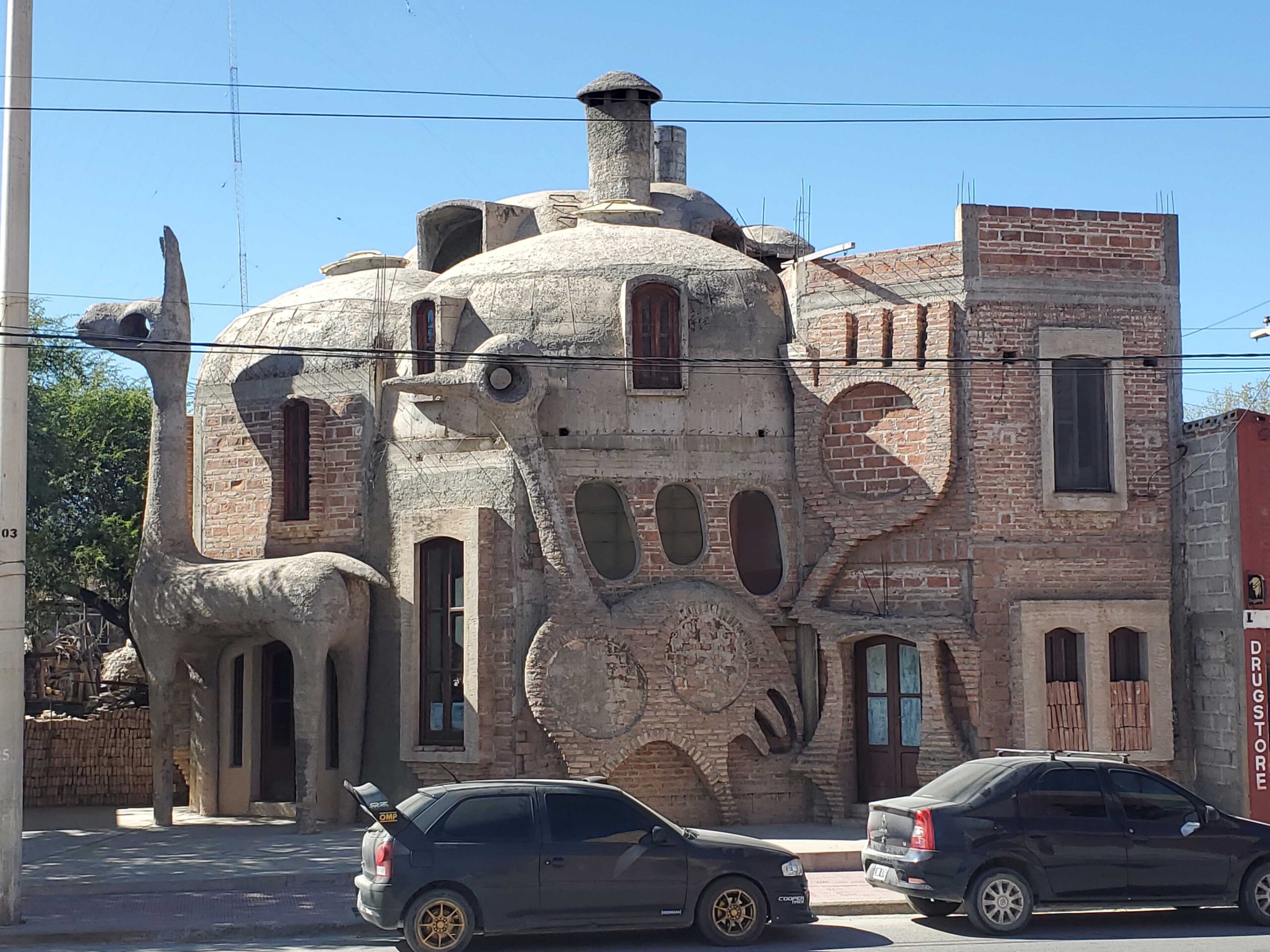
The animals are the native Vicuna, a type of llama, and the ostrich-like Rhea. We have an alert set in the event the house goes on the market.
We exited the museum about 11:00 and decided it was probably late enough to get on with the only activity to engage yourself in at the town–wine tasting. A pleasant walk about 4 blocks from our hotel took us to

The name of the bodega, “Sunday Brothers”, is significant to the history of wine making in the town. The town was founded by Jesuits, and there’s one key ingredient to celebrating the holy sacrament–wine! Wine production in the area started so the monks had a steady supply of sacramental wine. Thank you religion. Domingo Hermanos is one of the oldest bodegas in the region and produces wine in large quantities. By that I mean jug wine. While we were there, they were loading trucks from big conveyors hanging full of jugs of wine. We couldn’t get a good picture, but the jugs were on display in the tasting room.

While I’m sure it is a fine product, we didn’t enjoy any of the jug variety during our tasting. This tasting was fully automated and self serve. Similar to the serve yourself bars in the United States where you have a card or a wristband and scan it at the tap when you choose your beer, the staff at Domingo Hermanos presented us with a card that operated the wine sample machine, containing 8 bottles of their best varieties. Enjoy as much as you like, the card keeps track, and you pay the bill when you leave.
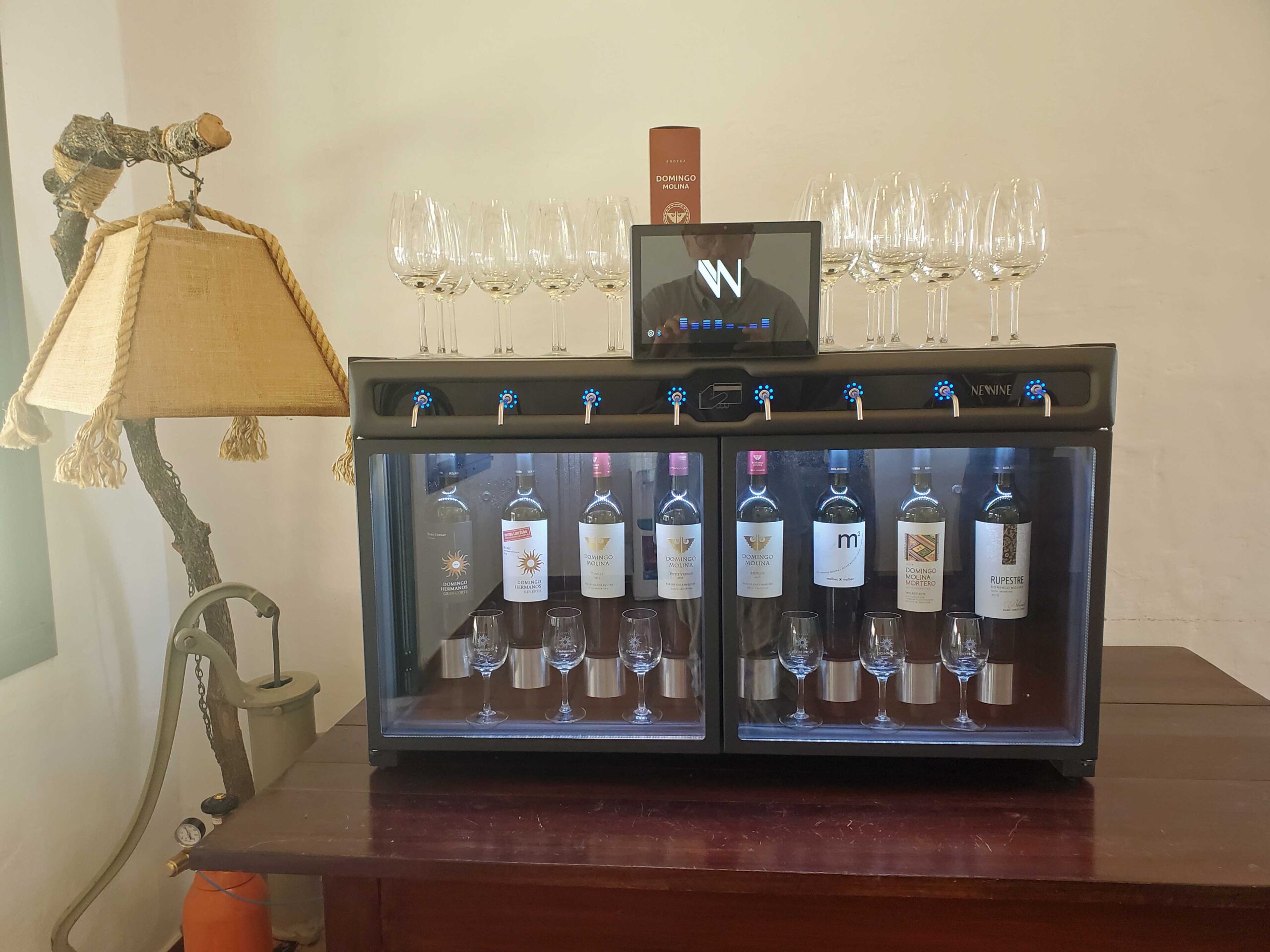
It was before noon, so we didn’t enjoy samples from every bottle. However, we did try several including their reserva and a wine that every bodega seems to produce that makes me laugh when I hear it: Malbec-Malbec. It is a blend of malbecs that make me think Malkovich, Malkovich. You either get it or you don’t. Anyway, the garden for tasting outside couldn’t have been lovelier.
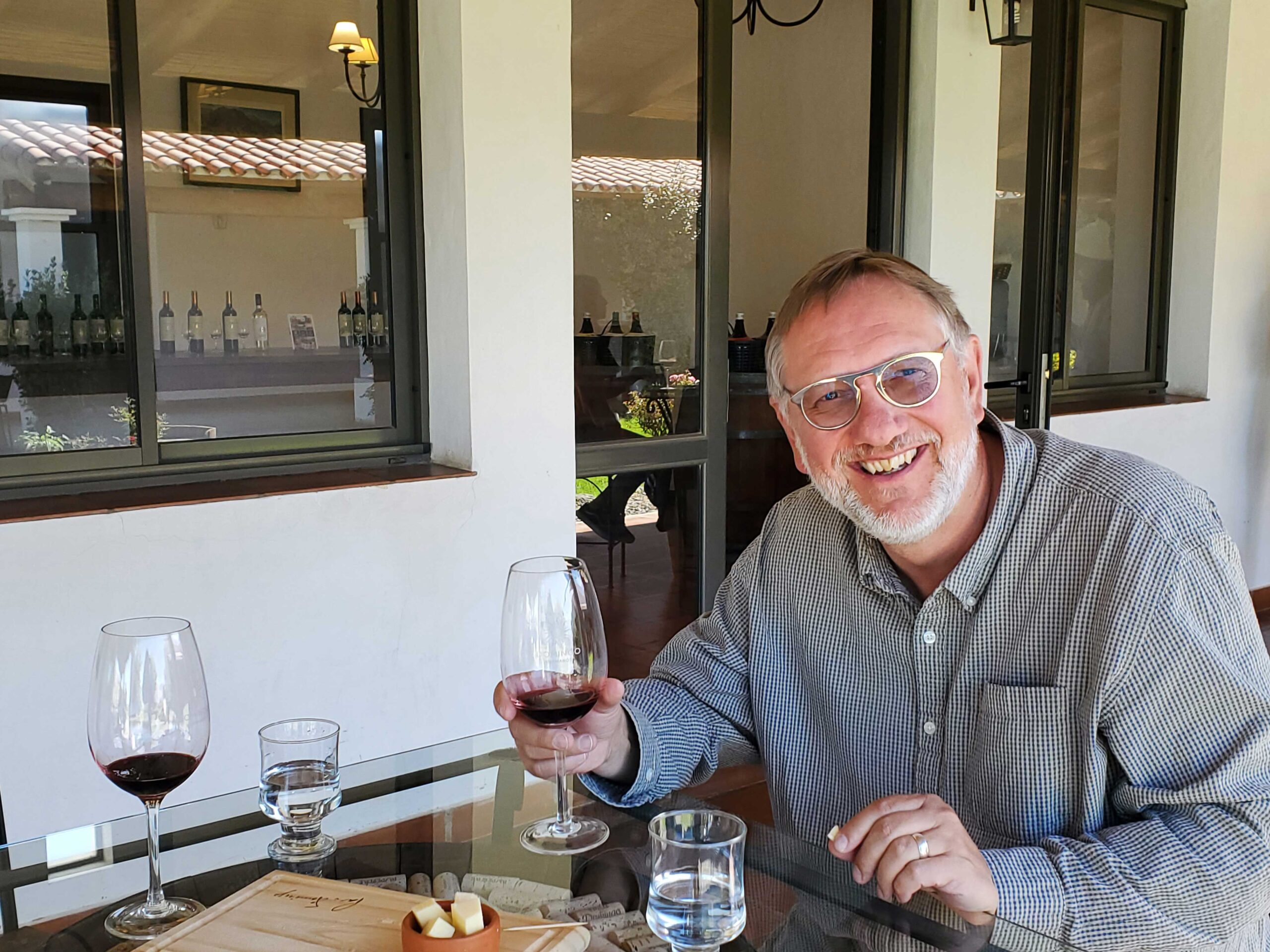
Here’s Ande enjoying a glass of wine next to a giant agave with the vineyards in the background.
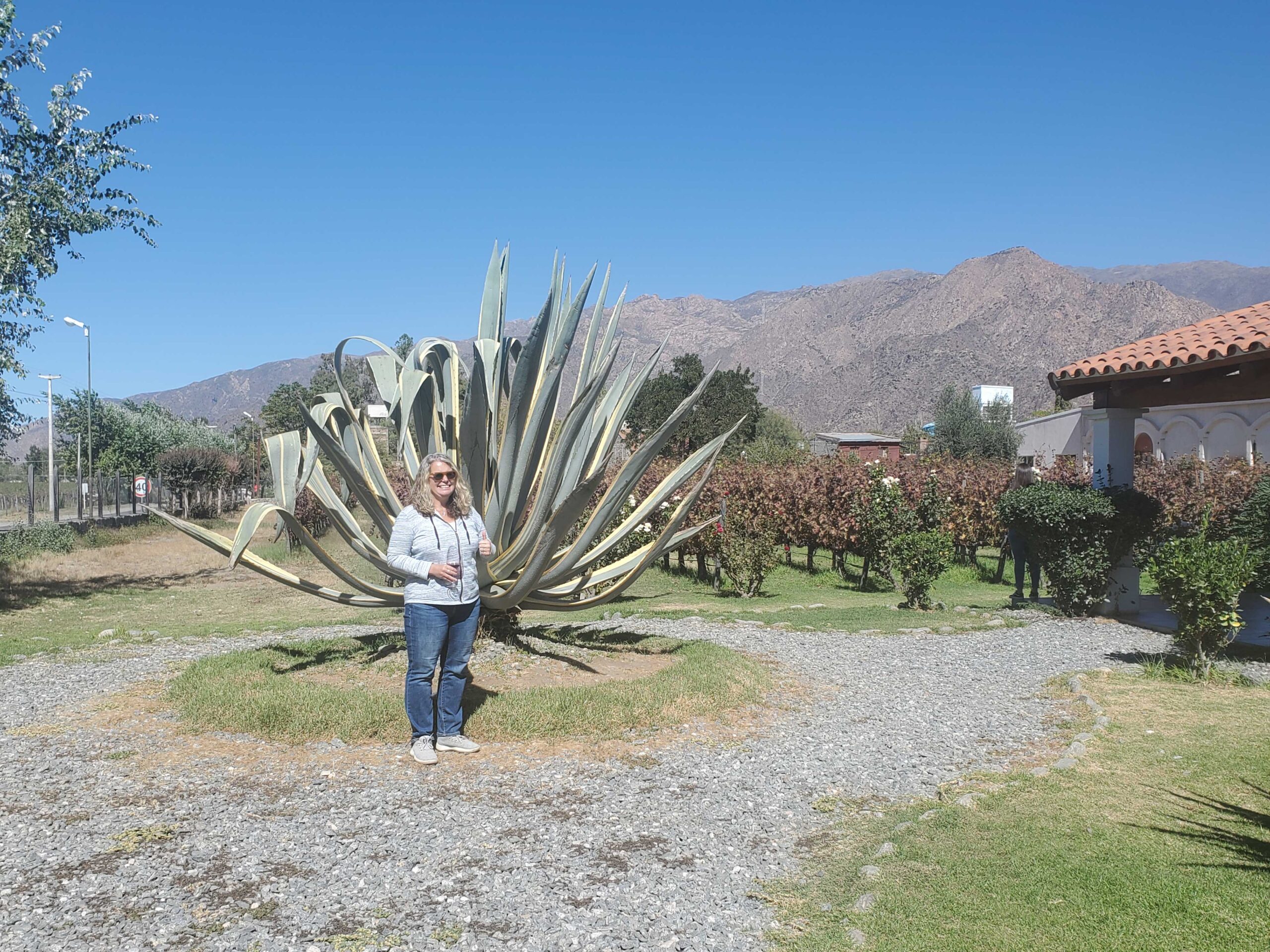
We had hoped to have lunch just outside of town at the Piattelli Bodega, but we discovered it is the hottest ticket in town and people get reservations weeks in advance. We were, however, able to get a reservation for the 3pm tour and tasting, so we settled for that and had lunch in town. The contrast between the two bodegas could not have been more extreme. While Domingo Hermanos was a historic operation run by local families, Piattelli opened operations in the new state-of-the-art building in 2013, complete with aforementioned gourmet eatery. Only several weeks before we arrived, they also welcomed the first guests to their exclusive spa and resort right next to the bodega. If you’re thinking Vegas, Hawaii, or something similar, you only need this picture of palm trees at the entrance to seal the comparison.
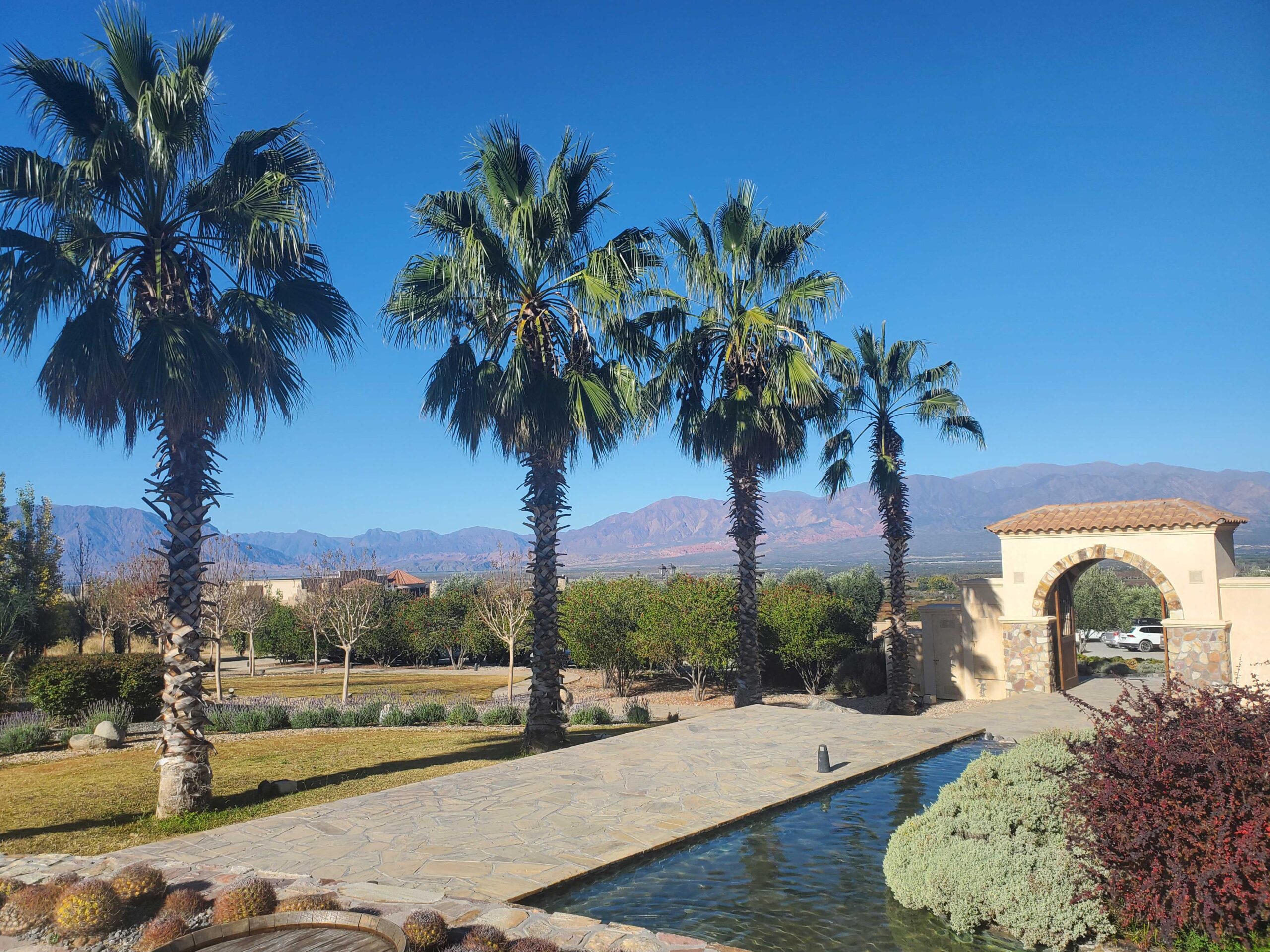
Turns out that the bodega is owned by a guy from Minnesota who made his money by selling his business to IKON Office Solutions. He got bored sometime in the early 2000s and decided to buy a struggling winery in Mendoza. That venture apparently worked out, so he expanded to the Piattelli property in Cafayate. We took a tour of the facility and tasted several wonderful wines. To give you an idea of how new and elegant the whole facility is, here’s where the pampered wine goes through the aging process.
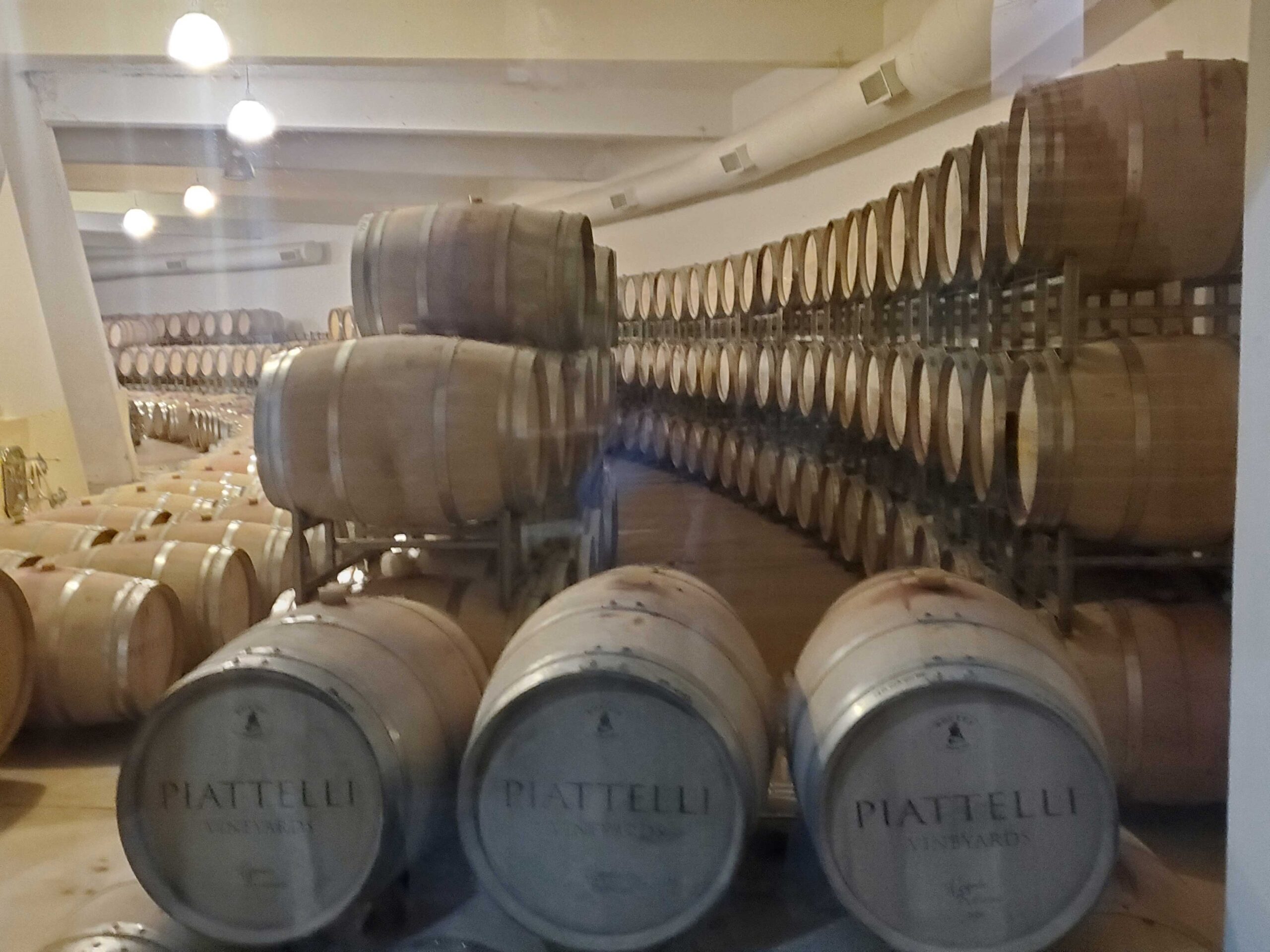
With only enough time to visit a couple of bodegas and much, much regret that we didn’t spend another day or two, we were glad to have engaged in the contrast between two very different bodegas. While quite new and elegant, Piattelli still had the charm of the entire valley with a lovely view of the town of Cafayate in the distance beyond the vineyards.

It is high desert, and I just loved this picture of the vineyard complete with cactus at the end of the row.

The image with the mountain in the background is a nice transition into the other wonderful part of Cafayate that we didn’t know about. While the guide book talked about the high altitude and unique growing conditions and wines, it didn’t prepare us for the amazing canyon and mountain roads we’d drive through to get there. Cafayate is about a 3-hour drive south of Salta, and it is really an amazing drive. Some of it is lush hillsides, some carved sandstone like arches in Utah, and others rivaling the Grand Canyon. It just went on and on. We thought we had seen some pretty amazing landscapes traveling north through the area of the Siete Colores and the high-altitude mountains of the Tren de los Nubes, but we both agree that the canyon leading into Cafayate beats them all. You just have to be there to experience the variety and grandeur. Our pictures don’t do it justice, but here they are.


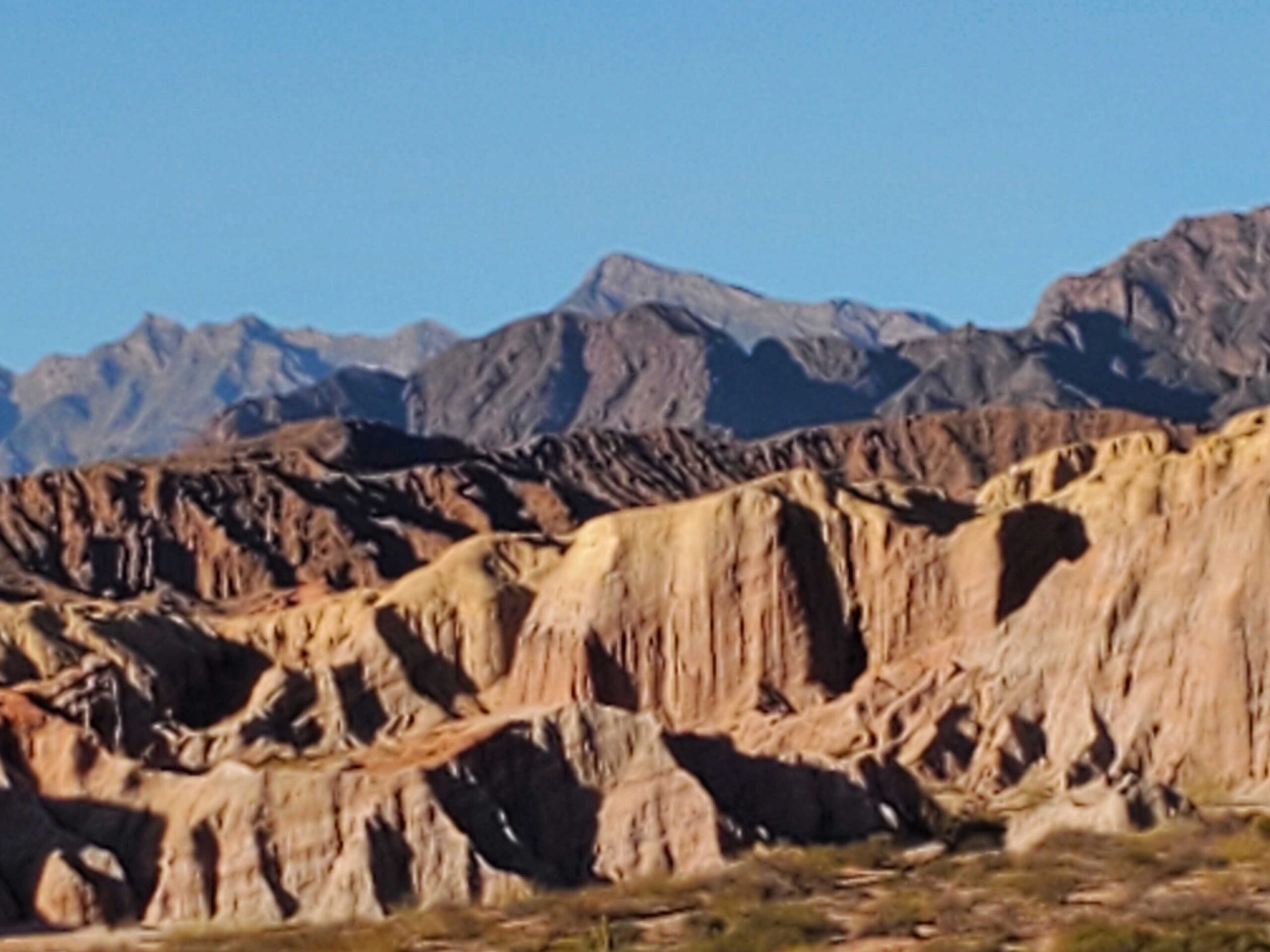

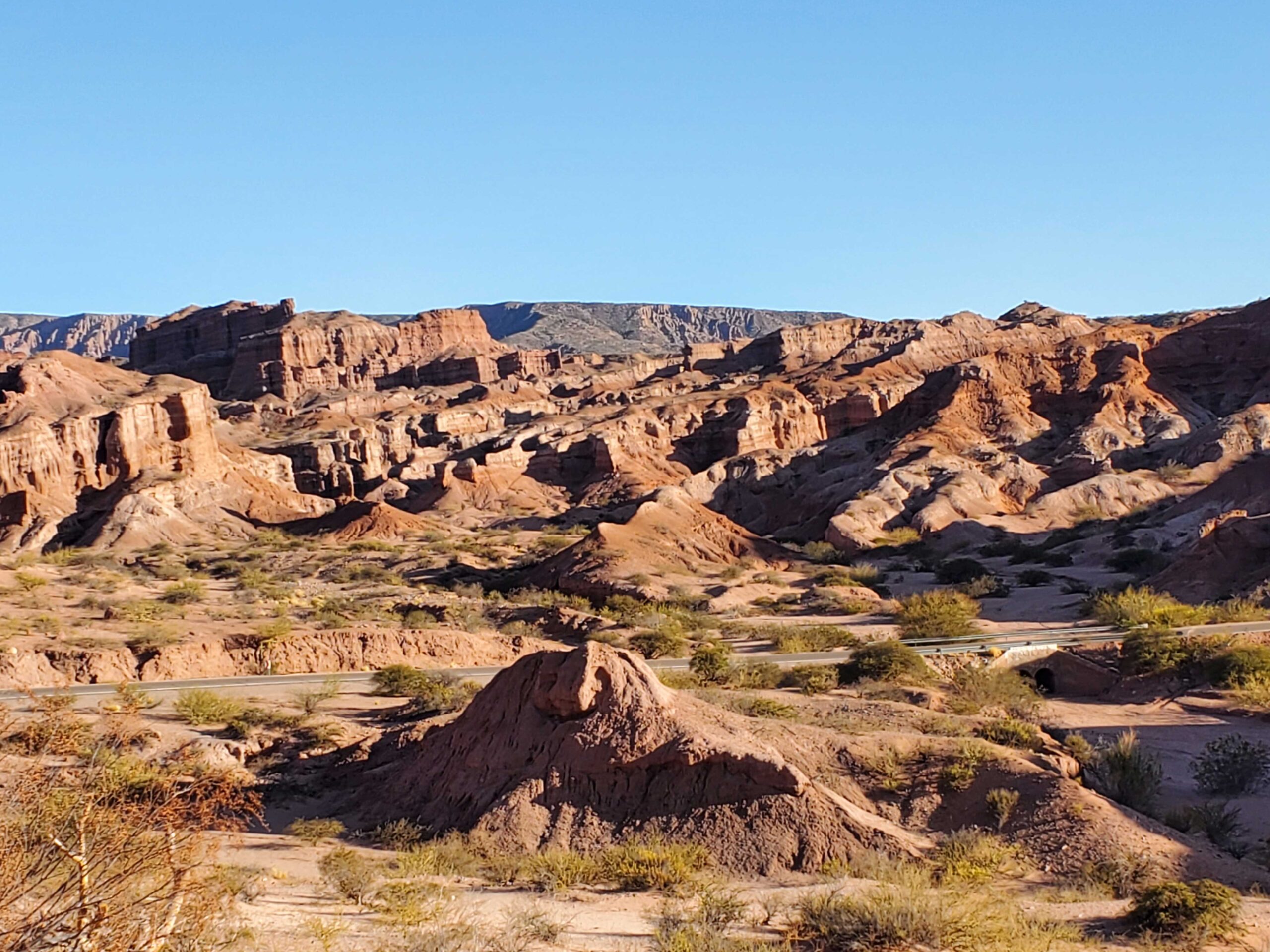


Yes, there’s more. A lot more. After a while pictures of mountains just all start looking the same. It was an amazing week, and we were very glad we chose to take the time to visit Salta Province and the areas outside the city. Each is unique and has something different to offer. If you happen to see a bottle of wine from Cafayate next time you’re in your local liquor store, buy it! They don’t get wide distribution, and you will not be disappointed.
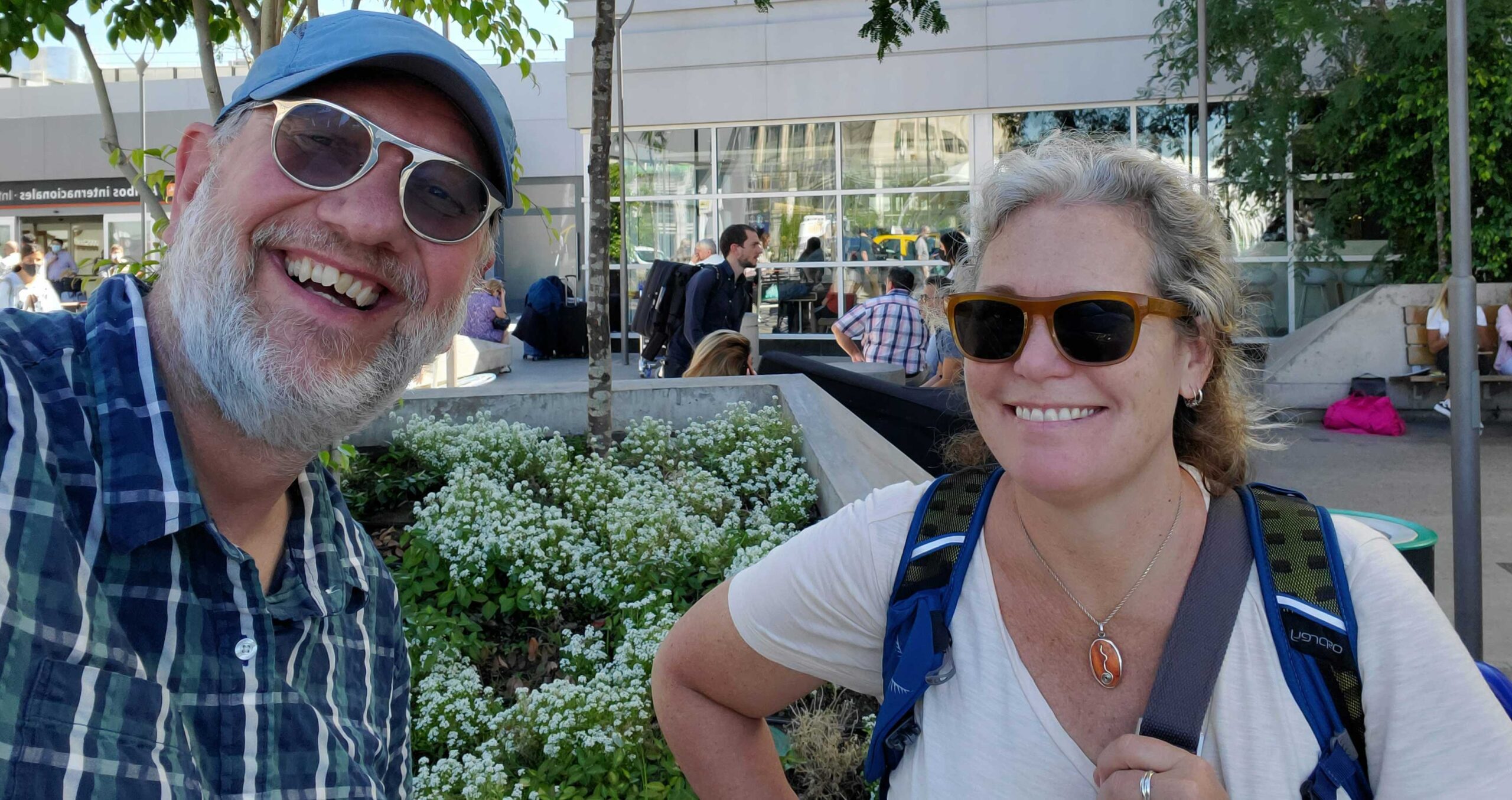
We will come visit if you ever buy the house by the museum!!! That is some very intricate and impressive brick-work! I’m always surprised at how desert-y the mountains are. I keep thinking in my head the mountains should be coniferous forest covered mountains like around here… not so much.
Oh – and a Malbec Malbec sounds like my kind of wine! 😉